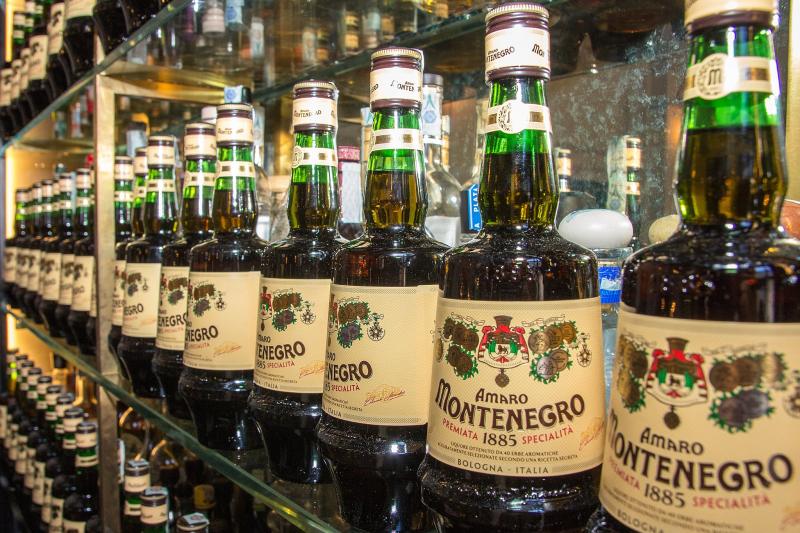If you go to an Italian restaurant – a good one, anyway – you’ll notice at the end of the menu, near the coffee and desserts, a selection of after-dinner drinks.
Often, the heading is amari, from the Italian word for ‘bitter’… but there might be any number of sweet things – like limoncello or sambuca – or fiery things – like grappa.
All of these are digestivi designed to get your digestion going, contrasting with the aperitivi you have to get your appetite going at the start of the meal. (Nowadays, doctors realize that drinking liqueurs with high alcohol content is more likely to irritate your stomach than stimulate it… But, hey, they taste good.)
Since they’re also the final stage in the Italians’ long, long meals, they are also known by the delightful nickname of ammazzacaffè – coffee-killers – as they ‘kill’ the taste remaining in your mouth.
But the word amaro also has a truer and more literal meaning. Among these drinks you might see the likes of Amaro Montenegro, Amaro del Capo or Amaro Lucano; order one, and you can expect a dark, syrupy substance that smells like herbs, flowers and spices and is usually made from grain liquor.
This is the real amaro, allegedly medicinal although probably more likely to cause a headache than cure one. It’s usually served straight and sipped slowly; in fact, Luigi Veronelli in The Wines of Italy (1982) insists that’s the only way to drink it, possibly alternating sips with ice water. But we’re not so snobby, really, are we? You’ll see some other suggestions if you read on.
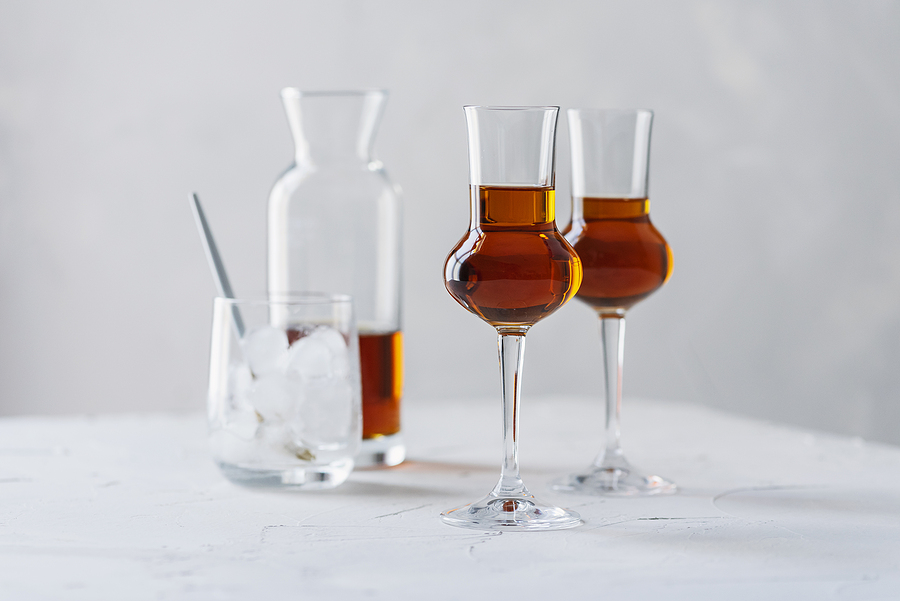
History
Infusions of alcohol drinks with aromatic botanicals have been used for millennia for all sorts of ailments, with ancient Greeks, Romans and Islamic caliphates among those to feel the benefit.
It’s no wonder, then, that the history of the Italian amaro begins not with a winemaker or a brewer but with a pharmacist. A Bolognese one working in Milan, to be precise, by the name of Ausano Ramazzotti.
In 1815, Ramazzotti prepared a drink with no wine content, combining 33 ingredients including orange peel, rose petals, star anise and alcohol. Amaro Ramazzotti quickly became hugely popular among the chemist’s customers, and for years he had a roaring trade.
Decades later, in 1848, he opens a bar near La Scala theater for the Milanese to stop in for an amaro instead of going to a café – a move that proved a masterstroke.
Around the same time and in the years since, countless brands of amaro have emerged. While they all have certain characteristics in common, there are several different types and many have regional connections. Here are some of the key brands to look out for.
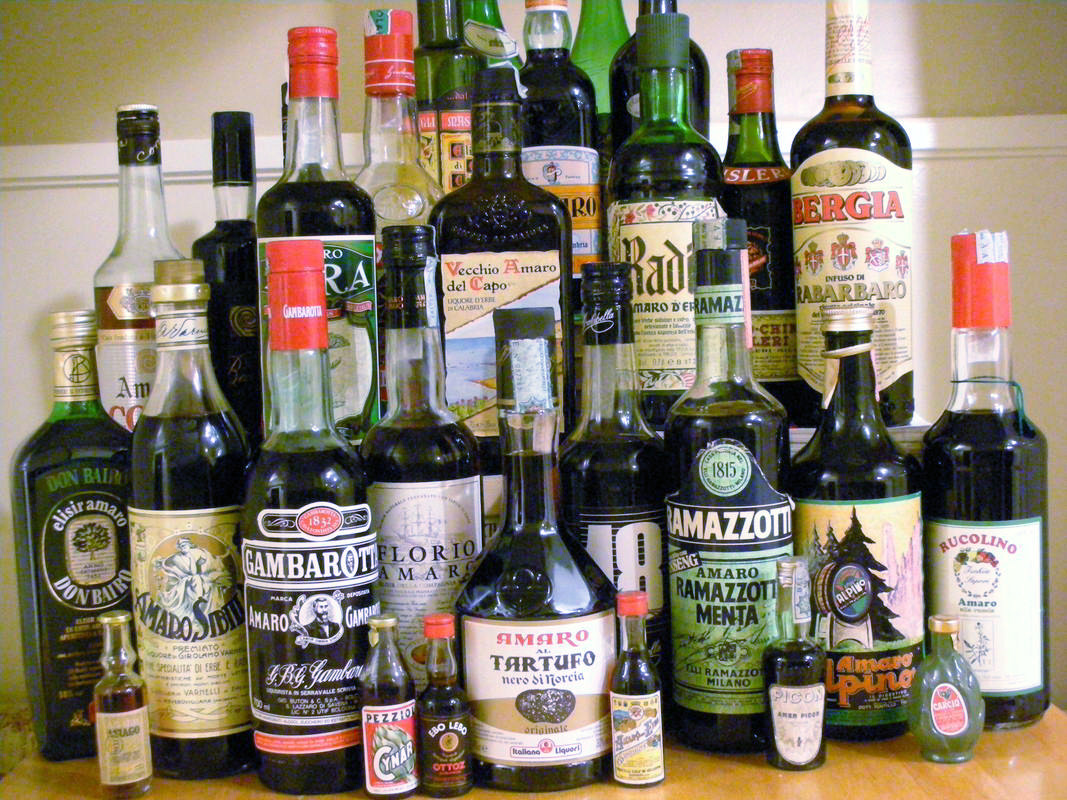
Amaro Ramazzotti
That early pioneer brand is still available, although its shop-front origins are far behind it as it’s owned by a major multinational. That said, it’s still firmly connected with the city of Milan.
Classified as a medium amaro, it’s 30% alcohol by volume (abv) and full-bodied. As with any amaro, you can serve it straight or with a little ice; add a twist of lemon or orange if you like.
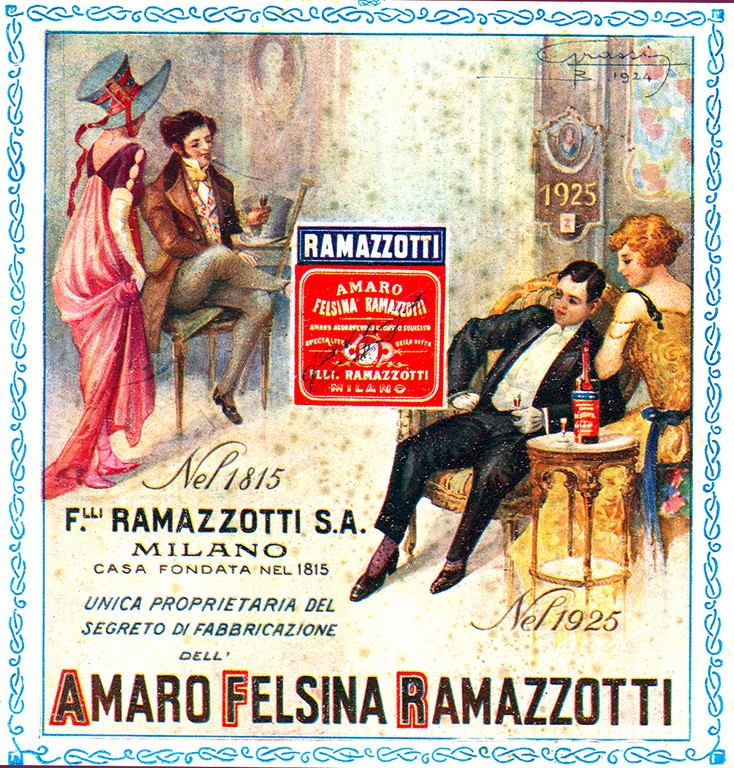
Vecchio Amaro del Capo
This popular brand hails from Calabria, whose coastline – specifically the Capo Vaticano from which it takes its name – is depicted on the label. It is made from ingredients local to the region including mandarin, juniper and licorice.
While it has a light, aromatic color and flavor, Amaro del Capo is 35% abv and can be kept in the freezer, helping you to keep cool in the sweltering mezzogiorno heat.
Braulio
From the south to the north and the hot to the cold. Braulio is an alpine amaro with warming qualities to match, developed in the 19th century by another pharmacist – this one in Bormio, a town in Valtellina in the mountains of Lombardy. Braulio’s factory was still in family ownership as recently as 2014, when it was bought by the enormous Campari group.
Made with flowers, juniper and wormwood, Braulio has a lower alcohol content of 21% abv but a remarkably heady flavor. Serve straight or, for an after-dinner cocktail, mix with vodka and bitters.
Fernet-Branca
Another amaro made in the north of Italy, Fernet is at home in Piemonte. It includes cinnamon, chamomile, saffron and myrrh, and it’s aged for at least a year in oak barrels.
Fernet is extremely dark in color and strong on the tongue. For those who find it a bit too much, it’s worth trying Branca Menta, a lighter, mint-flavored adaptation of the famous brand.
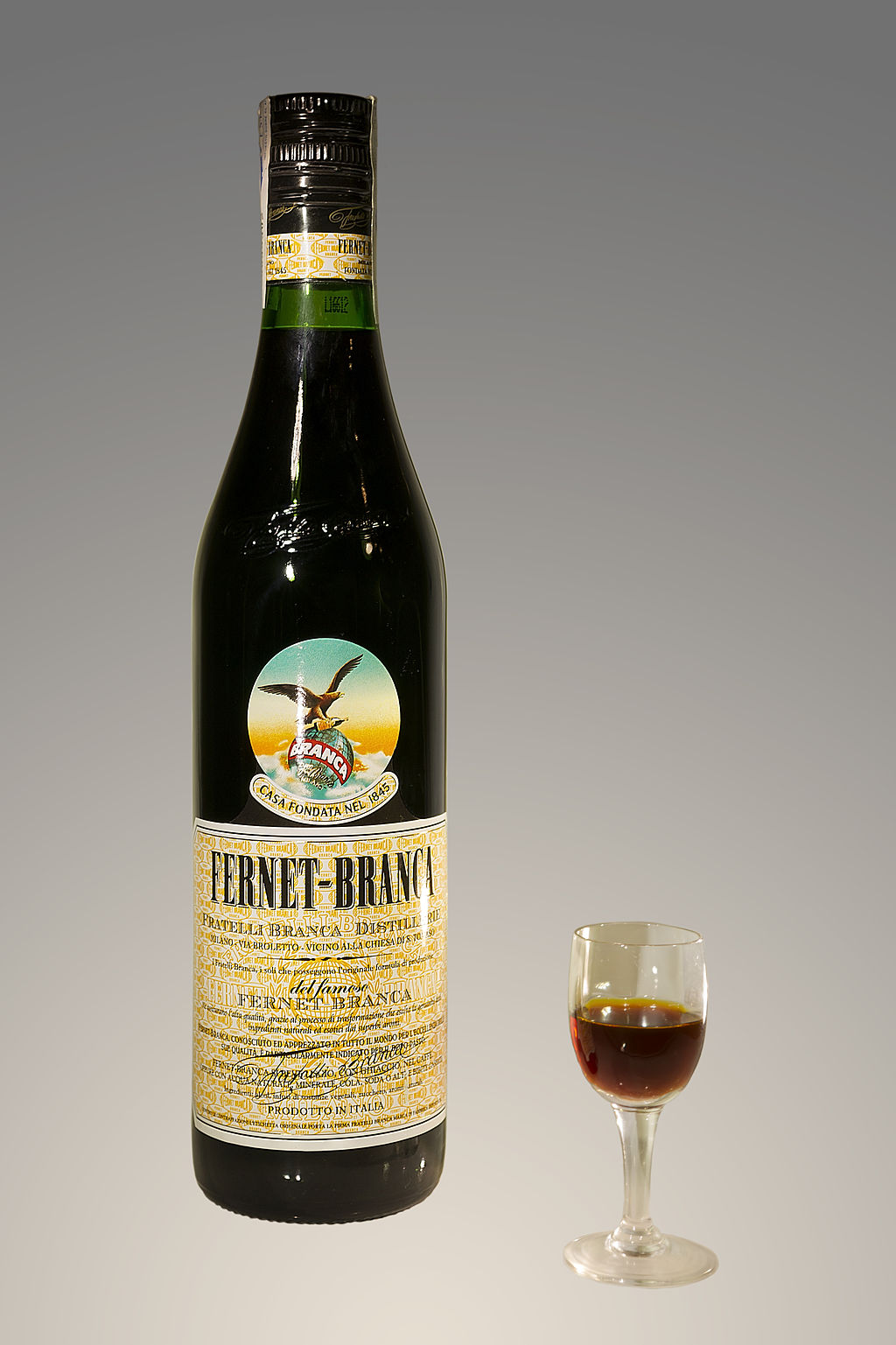
Amaro Montenegro
Ramazzotti may have made his name in Milan, but his hometown has its own famous amaro too. Bologna’s brainchild is Amaro Montenegro, named in honor of Elena of Montenegro, wife of King Vittorio Emanuele III. Montenegro is fairly light in color, taste and, at 23%, alcohol volume, making it (maybe too) easy to drink as is or with ice. Alternatively, try a Montenegroni.
Amaro Lucano
Despite the Alpine-looking scene on the label, it’s back down south in the scenic town of Pisticci, Basilicata, that we find this drink. With wormwood and berries but the lightness characteristic of southern amari, this is an exceptionally balanced digestivo.
For some mixology, why not have a go at an Italian Sangria? The recipe suggests using the very fine Barolo chinato, but any red wine will do.
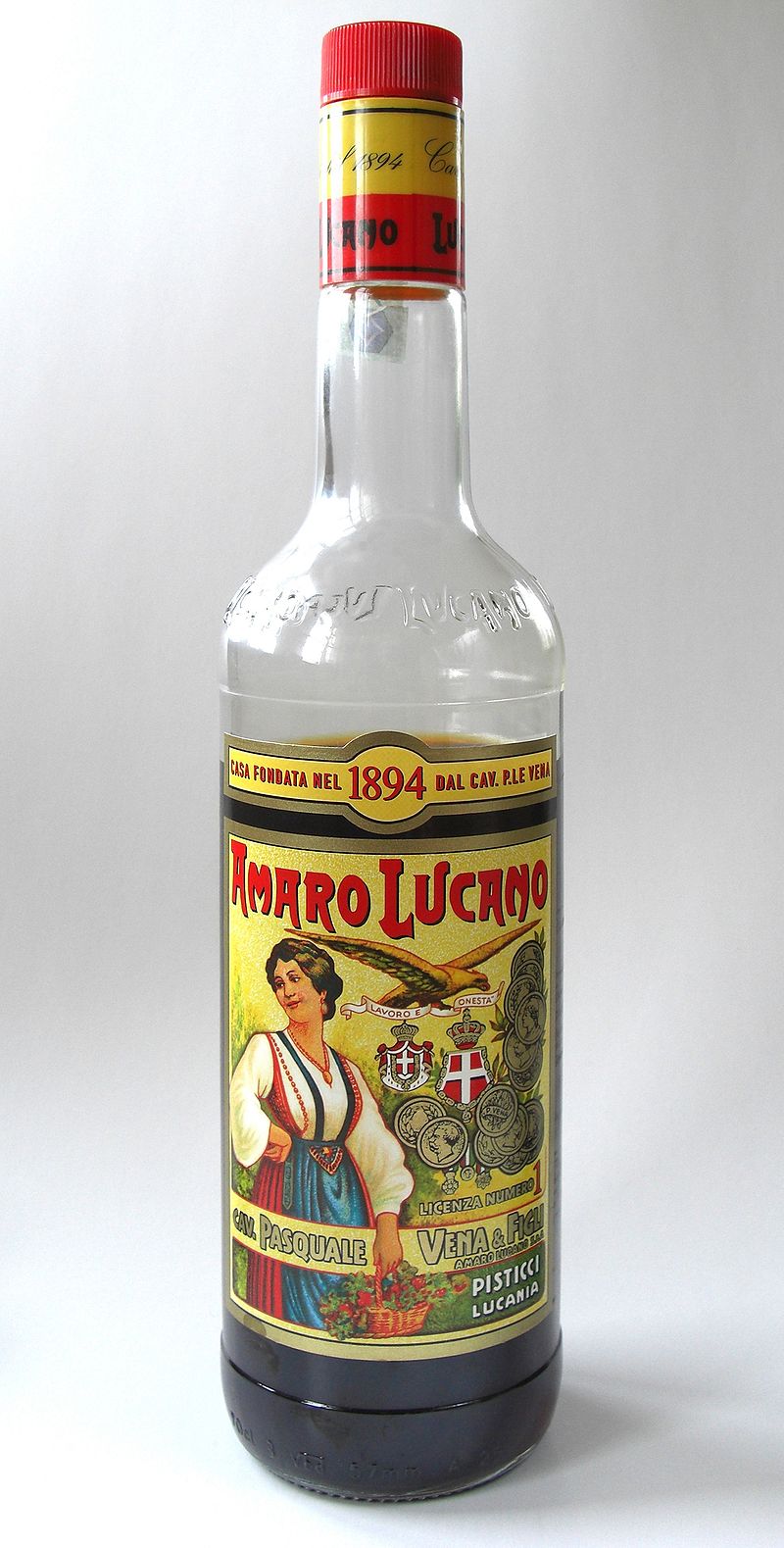
Amara
Our tour takes us off the peninsula now, and to the beautiful island of Sicily. Unlike the historic brands mentioned so far, the confusingly named Amara (notice the a on the end) is a newer addition to the scene. This amaro is based on the flavour of blood orange, giving it a fruitiness and sweetness that most amari lack.
The orange base makes this a versatile drink. For something different from your post-dinner tipple, try mixing it with tonic water or Prosecco.
Amaro Averna
We stay in Sicily to enjoy one of the best sold and most widely enjoyed of the Italian amari. Averna dates back to the 19th century, although it was also bought in 2014 by Campari.
This dark drink is 32% abv and, as well as the usual ‘straight or with an ice cube’, can also be drunk as a ‘summer drink’ by adding it to a full glass of ice.
… and the rest!
This is just an introduction to some of the best known and most widely available amari. More similar examples exist, and you can also get twists on the idea including artichoke-based amaro (such as Cynar, from Padua) or ones with truffle (most famously Nero di Norcia). Don’t be afraid to give a new one a try!
Featured Image Credit: Public Domain
